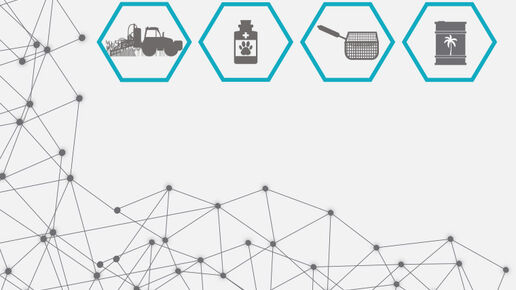Second EFSA chemicals in food report underlines “crucial role of data”

Pesticide Substance used to kill or control pests, including disease-carrying organisms and undesirable insects, animals and plants. residues in vegetables? Contaminants in palm oil? Traces of veterinary medicines in meat? This report provides an overview of data collected by EU Member States and stakeholders and analysed by EFSA in 2015 and 2016 to monitor and evaluate chemicals in food. This cooperation supports decision-makers in protecting the health of consumers in Europe.
Barbara Gallani, Head of Communications and External Relations at EFSA, said: “The report presents some of our work, which is already in the public domain, in a more accessible and engaging format. It highlights the crucial data collection role played by EU Member States and stakeholders and contains links to social media coverage of EFSA’s work as well as to the original scientific opinions and reports from which the data have been extracted.”
Pesticides, veterinary drugs, contaminants
The report focuses on two annual reports – pesticide residues and veterinary drug residues – and on consumer exposure Concentration or amount of a particular substance that is taken in by an individual, population or ecosystem in a specific frequency over a certain amount of time. to process contaminants of recent public interest: acrylamide in food, and glycidyl esters and 3-MCPD in vegetable oils and food.
Overall, the report highlights the continuing high compliance rates with EU targets for pesticides and veterinary drugs. It also shows how data on levels of these process contaminants in food can inform decision-makers and help them to identify ways of further reducing consumer exposure to these substances.
EFSA’s responsibilities include communicating clearly with European citizens on its risk assessment A specialised field of applied science that involves reviewing scientific data and studies in order to evaluate risks associated with certain hazards. It involves four steps: hazard identification, hazard characterisation, exposure assessment and risk characterisation. work. This report is aimed at better informing the general public and is linked to a request from the European Commission.
The crucial role of EU Member States and stakeholders
Across Europe, EU Member States and stakeholders collect, monitor and analyse information on levels of chemicals in plants, animals, food and drinks. This work helps national and European authorities to be aware of the situation on the ground and to measure the impact of existing controls. It can also help them to understand if new safety assessments or control measures are needed and to set priorities for future research funding and data collection activities.
The data collected can also be used in risk assessments of individual substances, such as the two examples of process contaminants featured in this report.
How to contact us
EFSA Media Relations Office
Tel. +39 0521 036 149
E-mail: press [at] efsa.europa.eu (Press[at]efsa[dot]europa[dot]eu)
(Only if you are a member of the press)
Ask a Question Service
You have a question about EFSA’s work? Contact our Ask a Question service!